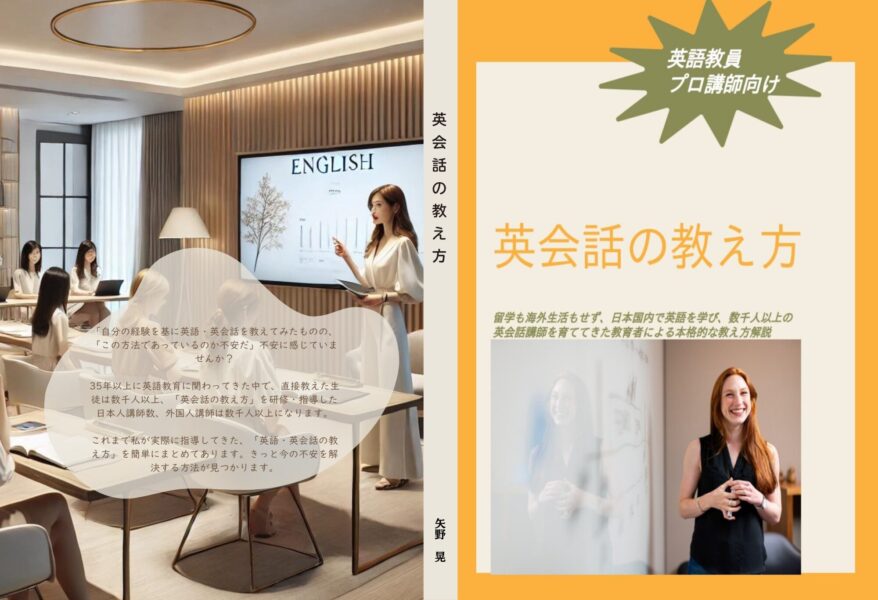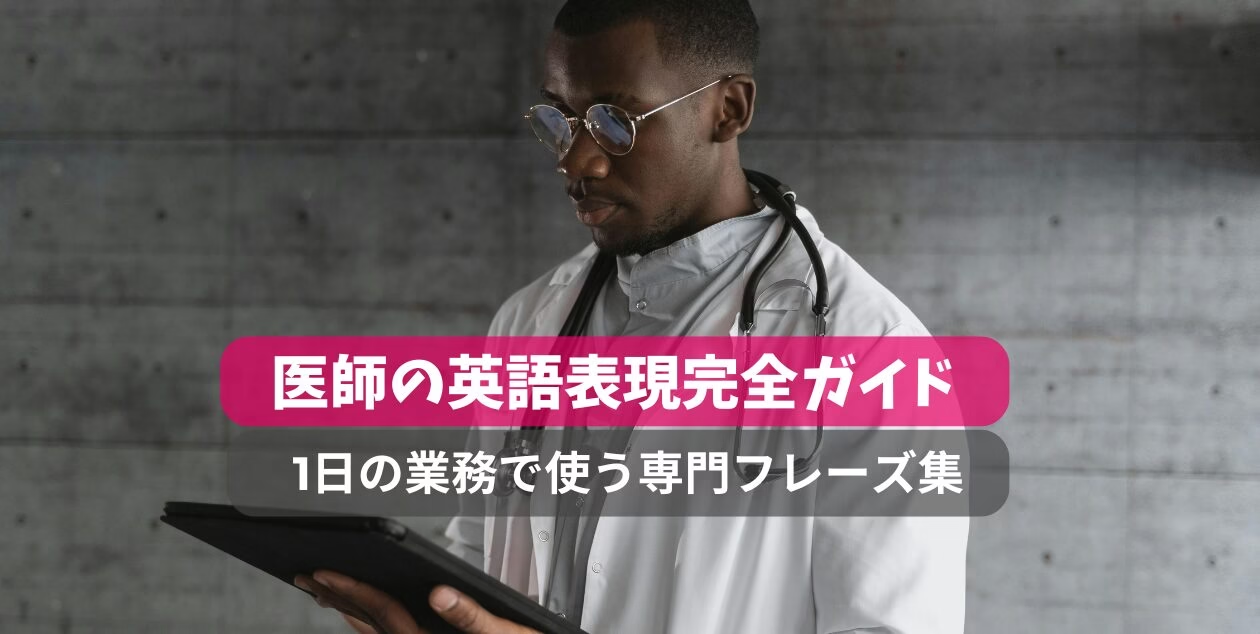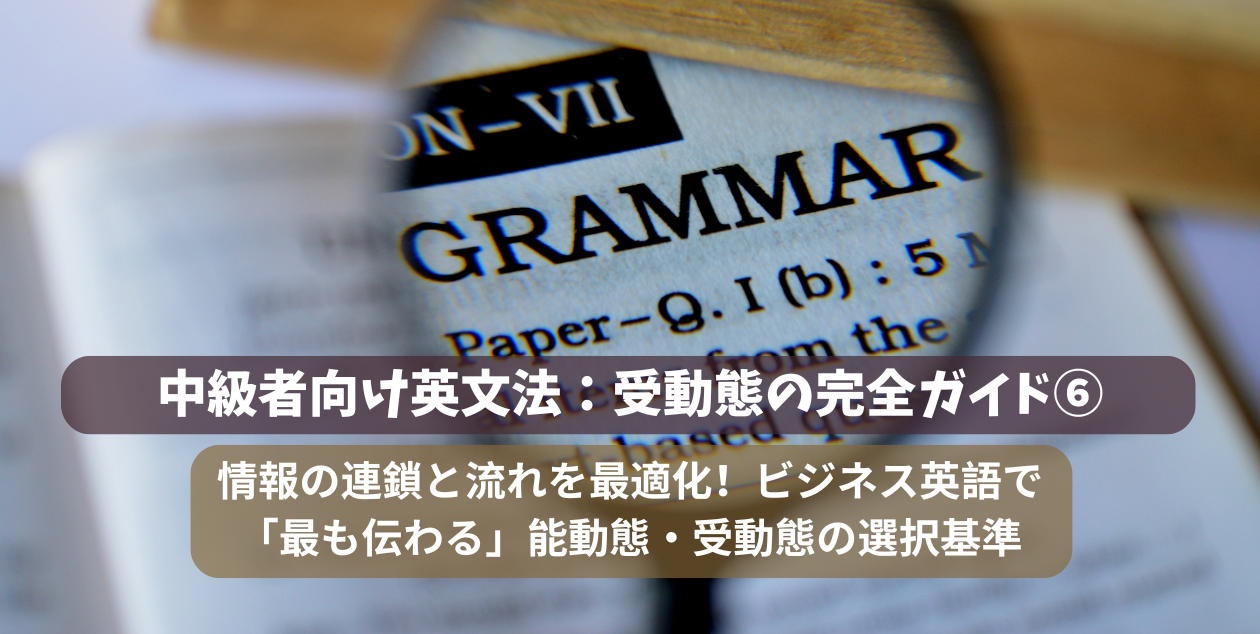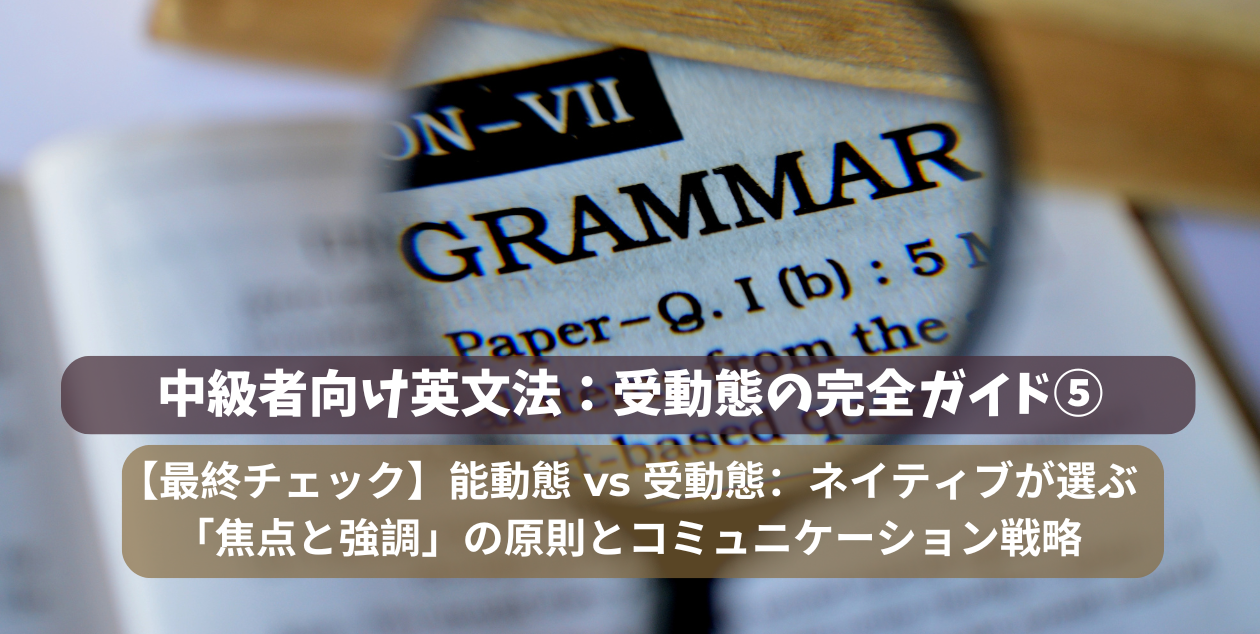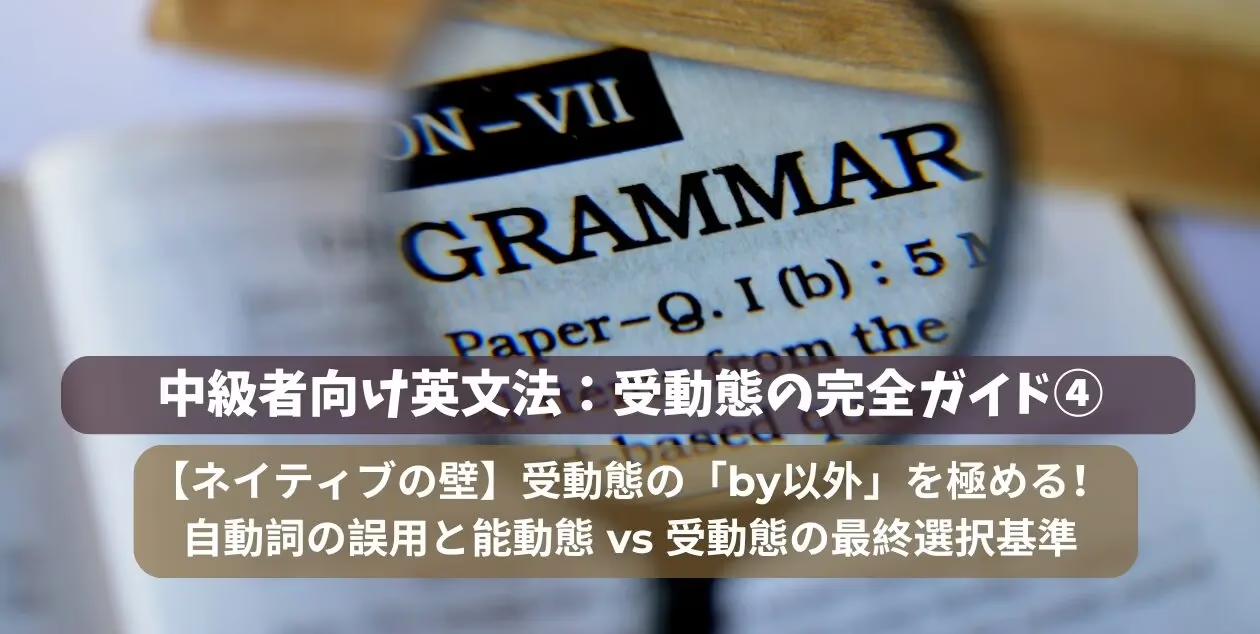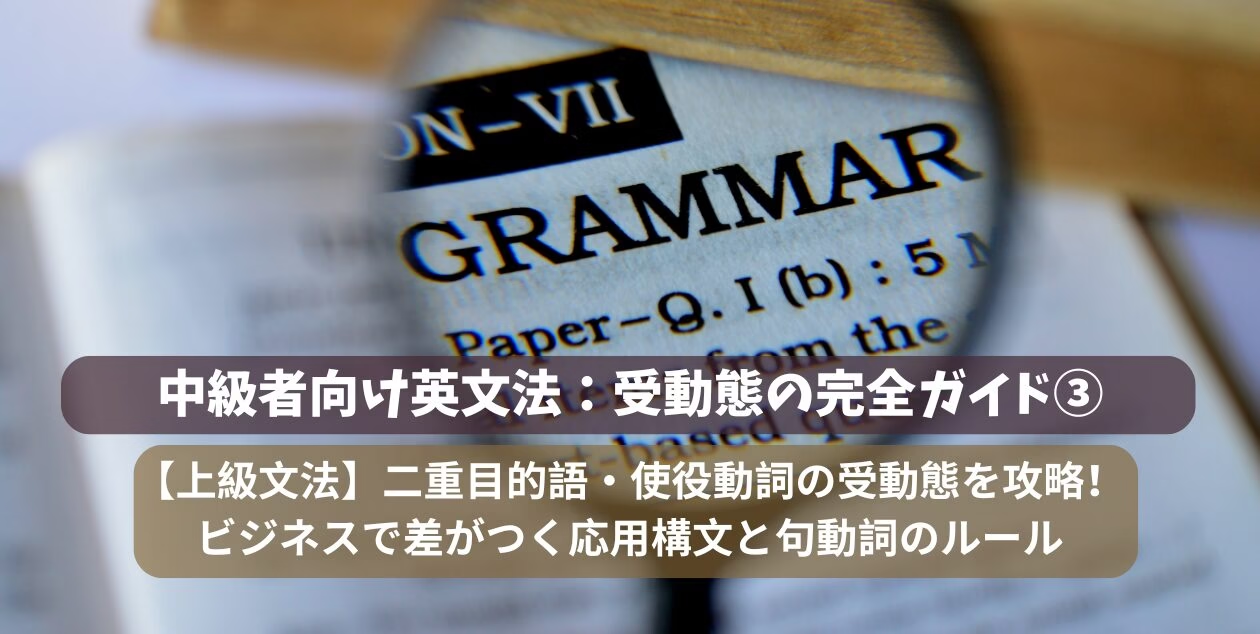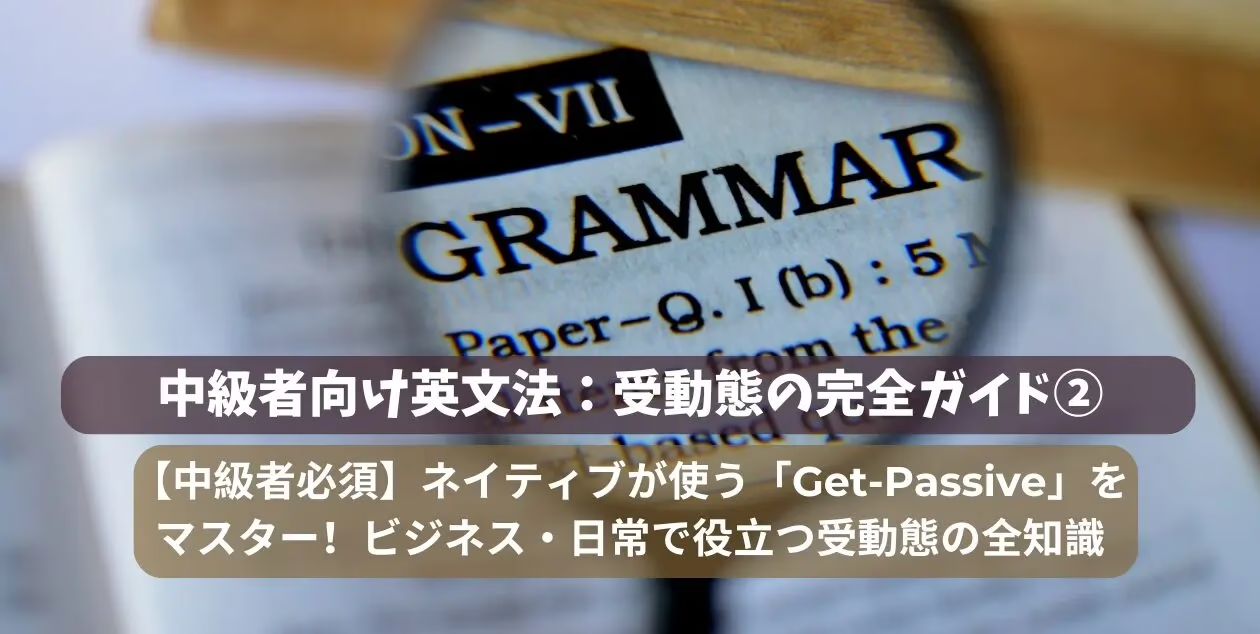グローバル化が進む現代の医療現場では、医師にとって英語でのコミュニケーション能力は不可欠なスキルとなりつつあります。海外からの患者さんとのやり取り、国際的な学会での発表、さらには海外での研修など、英語を必要とする場面は想像以上に多岐にわたります。
しかし、「専門用語が多くて難しい」「実際の診察やカンファレンスでどう使えばいいか分からない」と感じている方もいるのではないでしょうか? 医療現場特有の英語表現は、一般的な英会話とは異なるため、実践的な学習が求められます。
本記事では、医師の1日の業務の流れに沿って、病院で実際に使われる重要な英語表現を体系的にご紹介します。朝の出勤から、カンファレンス、診察、処置、患者・家族対応、そして終業・引き継ぎまで、それぞれの場面で役立つフレーズを、発音記号、詳しい解説、実用的な例文とともに網羅。この記事を読めば、あなたは国際化が進む医療現場で自信を持って英語を使いこなし、患者さんとのより良い関係を築けるようになるでしょう。
出勤・準備時間の英語表現

医師の一日は早朝から始まります。出勤から準備までの基本的な英語表現をマスターしましょう。
基本的な出勤表現
Arrive at the hospital
- 発音記号: /əˈraɪv ət ðə ˈhɒspɪt(ə)l/
- 意味: 病院に到着する
- 解説: 出勤時間前に到着し、業務の段取り準備にあたる際の基本表現
- 例文: The doctor arrived at the hospital before 7:30 AM.
- 和訳: その医師は午前7時30分前に病院に到着した。
Change into a white coat
- 発音記号: /tʃeɪndʒ ˈɪntuː ə waɪt koʊt/
- 意味: 白衣に着替える
- 解説: ロッカーで私服から白衣に更衣。IDや聴診器も準備する重要な準備作業
- 例文: She changed into her white coat before seeing patients.
- 和訳: 彼女は診察前に白衣に着替えた。
スケジュール管理の表現
Check today’s schedule
- 発音記号: /tʃek təˈdeɪz ˈskɛdʒuːl/
- 意味: 当日のスケジュール確認
- 解説: 外来/病棟/手術など、本日の予定を電子システムなどで確認する作業
- 例文: He checked today’s schedule for any urgent appointments.
- 和訳: 彼は今日の緊急の予定を確認した。
Review patient charts
- 発音記号: /rɪˈvjuː ˈpeɪʃənt ʧɑːrts/
- 意味: 患者カルテを見直す
- 解説: 担当患者全員の夜間経過、新規検査結果など情報整理を行う重要な業務
- 例文: The doctor reviewed patient charts before rounds.
- 和訳: 医師は回診前に患者カルテを見直した。
カンファレンス・回診の英語表現

朝のカンファレンスと回診は医師の重要な業務です。チーム医療に欠かせない表現を学びましょう。
カンファレンス関連表現
Attend morning conference
- 発音記号: /əˈtɛnd ˈmɔːrnɪŋ ˈkɑːnfərəns/
- 意味: 朝のカンファレンスに出席する
- 解説: 医師同士で前日夜間の動向・新規入院・重症例等を情報共有する重要な時間
- 例文: The doctor attended the morning conference with the ward team.
- 和訳: 医師は病棟チームと朝のカンファレンスに出席した。
Discuss cases with colleagues
- 発音記号: /dɪˈskʌs ˈkeɪsɪz wɪð ˈkɒliːɡz/
- 意味: 同僚医師と症例検討を行う
- 解説: 診断方針や治療計画について意見交換を行う専門的なディスカッション
- 例文: Doctors discussed challenging cases with their colleagues.
- 和訳: 医師たちは難症例について同僚と議論を交わした。
回診関連表現
Conduct medical rounds
- 発音記号: /kənˈdʌkt ˈmɛdɪkəl raʊndz/
- 意味: 病棟回診を行う
- 解説: 担当患者のベッドサイドで容態チェック・聴診・説明・指示出しを行う
- 例文: The doctor conducted medical rounds with the team.
- 和訳: 医師はチームと共に病棟回診を行った。
Examine patients
- 発音記号: /ɪɡˈzæmɪn ˈpeɪʃənts/
- 意味: 診察する
- 解説: バイタル測定・聴診・腹診、症状確認など全身を診る総合的な診察
- 例文: He examined each patient carefully.
- 和訳: 彼はそれぞれの患者を丁寧に診察した。
Give verbal orders to nurses
- 発音記号: /ɡɪv ˈvɜːrbl ˈɔːrdərz tə ˈnɜːrsɪz/
- 意味: 看護師へ口頭指示を出す
- 解説: 点滴変更や検査依頼など、看護師へ直接伝達する重要なコミュニケーション
- 例文: She gave verbal orders to the nurses during rounds.
- 和訳: 回診中、彼女は看護師へ口頭指示を出した。
診察・検査・処置の英語表現

医療現場での具体的な処置や検査に関する表現は、正確性が求められる重要な分野です。
記録・指示関連表現
Write progress notes
- 発音記号: /raɪt ˈproʊɡrɛs noʊts/
- 意味: 経過記録(デイリーノート)を書く
- 解説: 診察所見や方針、処方・検査オーダーをカルテに記録する法的にも重要な作業
- 例文: The doctor wrote progress notes for each patient.
- 和訳: 医師は各患者の経過記録を記入した。
Enter medication orders
- 発音記号: /ˈɛntər ˌmɛdɪˈkeɪʃən ˈɔːrdərz/
- 意味: 投薬指示を入力する
- 解説: 電子カルテや指示票に新規・変更の投薬指示を記載する責任ある業務
- 例文: He entered new medication orders in the system.
- 和訳: 彼はシステムに新たな投薬指示を入力した。
具体的な医療処置表現
Perform medical procedures
- 発音記号: /pərˈfɔːrm ˈmɛdɪkəl prəˈsiːdʒərz/
- 意味: 医療処置を実施する
- 解説: 採血、褥瘡処置、中心静脈カテーテル挿入、ルート確保などの総称
- 例文: The doctor performed several medical procedures that morning.
- 和訳: その朝、医師はいくつかの医療処置を行った。
採血関連
Draw blood / Perform venipuncture
- 発音記号: /drɔː blʌd/ /ˈpɜːrfɔːrm ˈvɛnɪˌpʌŋktʃər/
- 意味: 採血をする
- 解説: 検査や診断のため、患者から静脈血を採取する。多くは医師・検査技師が実施
- 例文: The doctor drew blood from the patient for laboratory tests.
- 和訳: 医師は検査のために患者から採血した。
褥瘡処置
Perform pressure ulcer care
- 発音記号: /ˈpɜːrfɔːrm ˈprɛʃər ˈʌlkər keər/
- 意味: 褥瘡(じょくそう、床ずれ)の処置をする
- 解説: 褥瘡部位の洗浄、ガーゼ交換、壊死組織のデブリードマン(除去)など
- 例文: The doctor performed pressure ulcer care for the bedridden patient.
- 和訳: 医師は寝たきり患者の褥瘡処置を行った。
カテーテル関連
Insert a central venous catheter
- 発音記号: /ɪnˈsɜːrt ə ˈsɛntrəl ˈviːnəs ˈkæθɪtər/
- 意味: 中心静脈カテーテルを挿入する
- 解説: CVカテーテルを、鎖骨下静脈や内頚静脈等から中心静脈へ穿刺挿入し、輸液や薬剤投与、静脈圧測定などに使用
- 例文: The doctor inserted a central venous catheter in the ICU.
- 和訳: 医師はICUで中心静脈カテーテルを挿入した。
Secure intravenous (IV) access / Start an IV line
- 発音記号: /sɪˈkjʊər ˌɪntrəˈviːnəs ˈæksɛs/ /stɑːrt æn ˌaɪˈviː laɪn/
- 意味: 静脈路(ルート)を確保する
- 解説: 点滴・薬剤投与用に、末梢または中心静脈にカテーテルを挿入
- 例文: The doctor secured IV access before surgery.
- 和訳: 医師は手術前にルートを確保した。
検査オーダー関連表現
Order blood tests / Perform blood tests
- 発音記号: /ˈɔːrdər blʌd tɛsts/ /ˈpɜːrfɔːrm blʌd tɛsts/
- 意味: 血液検査をオーダーする/実施する
- 解説: 診断目的で血液検体を採取・分析依頼
- 例文: The doctor ordered blood tests to check for anemia.
- 和訳: 医師は貧血の確認のため血液検査をオーダーした。
Order imaging tests / Request an X-ray / Request a CT scan
- 発音記号: /ˈɔːrdər ˈɪmɪdʒɪŋ tɛsts/ /rɪˈkwɛst ən ˈɛksˌreɪ/ /rɪˈkwɛst ə ˌsiːˈtiː skæn/
- 意味: 画像検査(レントゲン・CTなど)を依頼する
- 解説: 診断目的でレントゲンやCT、MRIなどの画像診断を依頼する
- 例文: She requested a CT scan to rule out internal injury.
- 和訳: 彼女は内臓損傷の除外のためCTを依頼した。
Order diagnostic tests
- 発音記号: /ˈɔːrdər daɪəɡˈnɒstɪk tɛsts/
- 意味: 診断検査をオーダーする
- 解説: 血液検査、画像検査(レントゲン、CTなど)を依頼
- 例文: She ordered diagnostic tests for her patient.
- 和訳: 彼女は患者のために診断検査をオーダーした。
患者・家族対応の英語表現

患者さんや家族とのコミュニケーションは医療の質を大きく左右します。
患者説明関連表現
Explain treatment plans to patients
- 発音記号: /ɪkˈspleɪn ˈtriːtmənt plænz tə ˈpeɪʃənts/
- 意味: 患者に治療方針を説明する
- 解説: 検査結果や今後の治療について、分かりやすく解説する重要なコミュニケーション
- 例文: The doctor explained the treatment plan to the patient.
- 和訳: 医師は患者に治療方針を説明した。
Meet with patient’s family
- 発音記号: /miːt wɪð ˈpeɪʃənts ˈfæmɪli/
- 意味: 患者の家族に会う
- 解説: 状態説明や手術同意、退院調整など重要な面談
- 例文: He met with the patient’s family in the consultation room.
- 和訳: 彼は相談室で患者の家族と面談した。
専門医紹介表現
Make referrals to specialists
- 発音記号: /meɪk rɪˈfɜːrəlz tə ˈspɛʃəlɪsts/
- 意味: 専門医に紹介する
- 解説: 他科へのコンサルテーション依頼や転科調整
- 例文: He made referrals to several specialists.
- 和訳: 彼はいくつかの専門医に紹介を行った。
緊急時・業務調整の英語表現

医療現場では予期せぬ状況への迅速な対応が求められます。
休憩・メール対応表現
Take a lunch break
- 発音記号: /teɪk ə lʌntʃ breɪk/
- 意味: 昼食休憩をとる
- 解説: スタッフルームで短い休憩
- 例文: The doctors took a lunch break together.
- 和訳: 医師たちは一緒に昼食の休憩を取った。
Check and reply to emails
- 発音記号: /tʃek ənd rɪˈplaɪ tuː ˈiːmeɪlz/
- 意味: メールを確認し返信する
- 解説: 院内外の業務連絡や医局通知などに対応
- 例文: She checked and replied to emails during her break.
- 和訳: 彼女は休憩中にメールを確認し返信した。
手術・外来準備表現
Prepare for afternoon surgeries or outpatient clinic
- 発音記号: /prɪˈpɛr fɔːr ˈæftərˌnuːn ˈsɜːrdʒəriz ɔːr ˈaʊtˌpeɪʃənt ˈklɪnɪk/
- 意味: 午後の手術や外来準備をする
- 解説: 術式確認、患者把握、カルテチェック等
- 例文: The doctor prepared for afternoon surgeries after lunch.
- 和訳: 医師は昼食後に午後の手術の準備をした。
Confirm surgical procedure
- 発音記号: /kənˈfɜːrm ˈsɜːrdʒɪkəl prəˈsiːdʒər/
- 意味: (手術で)術式を確認する
- 解説: 執刀内容や術式、必要器具・体位などを手術前に最終確認
- 例文: The surgeon confirmed the surgical procedure with the team before starting.
- 和訳: 執刀医は開始前にチームと術式を確認した。
午後の診療表現
See outpatients in clinic
- 発音記号: /siː ˈaʊtˌpeɪʃənts ɪn ˈklɪnɪk/
- 意味: 外来患者を診察する
- 解説: 診察・検査・処方・指導など外来業務全般
- 例文: The doctor saw more than twenty outpatients that afternoon.
- 和訳: その午後、医師は20人以上の外来患者を診察した。
Perform surgery
- 発音記号: /pərˈfɔːrm ˈsɜːrdʒəri/
- 意味: 手術を執刀・助手する
- 解説: 執刀医・指導医・助手等さまざまな役割で手術を実施
- 例文: She performed surgery for an appendicitis patient.
- 和訳: 彼女は虫垂炎の患者の手術を行った。
Supervise or teach residents / medical students
- 発音記号: /ˈsuːpərˌvaɪz ɔːr tiːʧ ˈrɛzɪdənts ˈmɛdɪkəl ˈstjuːdənts/
- 意味: 研修医・医学生の指導を行う
- 解説: 臨床現場で実技・理論指導や症例プレゼンの助言等
- 例文: The doctor supervised residents during the outpatient clinic.
- 和訳: 医師は外来診療中に研修医を指導した。
緊急対応表現
Respond to emergency calls
- 発音記号: /rɪˈspɒnd tuː ɪˈmɜːrdʒənsi kɔːlz/
- 意味: 急患対応・緊急呼び出しに応じる
- 解説: コード・ブルーや救急外来からの招集に迅速対応
- 例文: He responded to an emergency call in the ER.
- 和訳: 彼は救急外来の急患対応に応じた。
Update patient status
- 発音記号: /ʌpˈdeɪt ˈpeɪʃənt ˈsteɪtəs/
- 意味: 患者の状態をアップデートする
- 解説: 経過変化などをカルテ・スタッフ・家族へ最新情報連絡
- 例文: The doctor updated the patient’s status for the night shift team.
- 和訳: 医師は夜勤チームへ患者の最新状態をアップデートした。
終業・引き継ぎの英語表現

一日の業務を安全に終了するための表現も重要です。
終業準備表現
Sign discharge paperwork
- 発音記号: /saɪn dɪsˈʧɑːrdʒ ˈpeɪpərˌwɜːrk/
- 意味: 退院書類にサイン
- 解説: 退院時の診断書・指示内容などに署名確認
- 例文: She signed the discharge paperwork for her patient.
- 和訳: 彼女は患者の退院書類にサインした。
Finalize documentation
- 発音記号: /ˈfaɪnəlaɪz ˌdɑːkjʊmɛnˈteɪʃən/
- 意味: 記録を最終確認・完成させる
- 解説: 診療記録・検査所見・サマリーなど締め作業
- 例文: He finalized all documentation before leaving.
- 和訳: 彼は退勤前に全ての記録を最終確認した。
Handover to night shift doctor
- 発音記号: /ˈhændˌoʊvər tuː naɪt ʃɪft ˈdɒktər/
- 意味: 夜勤医師へ業務引き継ぎ
- 解説: 急変・気をつける患者・治療指示などについて申し送り
- 例文: She handed over to the night shift doctor before leaving.
- 和訳: 彼女は退勤前に夜勤担当医へ申し送りを行った。
退勤表現
Change out of white coat
- 発音記号: /tʃeɪndʒ aʊt ɒv waɪt koʊt/
- 意味: 白衣から私服に着替える
- 解説: 更衣室で身支度し直し、忘れ物や汚れの確認
- 例文: He changed out of his white coat before going home.
- 和訳: 彼は帰宅前に白衣から私服に着替えた。
Leave the hospital
- 発音記号: /liːv ðə ˈhɒspɪt(ə)l/
- 意味: 病院を出る
- 解説: 業務終了後、同僚やスタッフに挨拶して退勤
- 例文: The doctor left the hospital after his shift.
- 和訳: 医師は勤務後、病院を出た。
実践的な会話例

実際の医療現場での会話例を通して、これらの表現がどのように使われるかを見てみましょう。
医師同士の会話
Dr. Adams: Good morning! What time did you arrive at the hospital today?
Dr. Lee: I arrived at the hospital a bit earlier than usual—around 7:20. I went straight to the locker room and changed into my white coat.
Dr. Adams: Did you have a chance to check today’s schedule before the conference?
Dr. Lee: Yes, I checked today’s schedule and reviewed patient charts for our new admissions. There were a couple of tough cases we needed to discuss.
Dr. Adams: I saw you at the morning conference. I thought your comment during the case discussion was spot-on.
Dr. Lee: Thank you. After the conference, we went to the ward to conduct medical rounds. I made sure to examine the patients thoroughly and gave verbal orders to nurses for two of them.
Dr. Adams: Same here. Back at the station, I had to write progress notes and enter medication orders right away.
Dr. Lee: I spent some extra time with Mr. Suzuki to explain his treatment plan. Then I met with his family to answer their questions about the upcoming surgery.
Dr. Adams: That’s important. Did you also have any procedures this morning?
Dr. Lee: Yes, I had to draw blood and perform pressure ulcer care for a long-term patient. Later, I inserted a central venous catheter and secured IV access before surgery.
Dr. Adams: Busy morning! I also had to order blood tests and request a CT scan for a trauma case.
Dr. Lee: During lunch, I managed to take a lunch break and quickly check and reply to emails. Then, I went over to confirm the surgical procedure scheduled for this afternoon.
Dr. Adams: Are you in the OR later?
Dr. Lee: Yes, I will perform surgery and supervise the residents during the procedure.
Dr. Adams: Let me know if you need help. I have outpatient clinic duty afterwards.
Dr. Lee: Thanks! Just hope no emergency calls come in before that.
Dr. Adams: Absolutely. Don’t forget to update patient status before shift change and sign discharge paperwork.
Dr. Lee: Will do! I’ll make sure to finalize documentation and do a handover to the night shift doctorbefore I go.
Dr. Adams: Sounds good. Afterward, we can change out of our white coats and leave the hospital together.
アダムズ医師:おはようございます!今日は何時に病院に到着(arrive at the hospital)しましたか?
リー医師:いつもより少し早めの7時20分頃に到着しました。そのままロッカーに行って白衣に着替え(changed into my white coat)ましたよ。
アダムズ医師:カンファレンスの前に本日のスケジュールを確認(check today’s schedule)する時間はありました?
リー医師:はい、スケジュールを確認して、新規入院患者のカルテを見直しました(reviewed patient charts)。検討が必要な難しい症例がいくつかありましたね。
アダムズ医師:朝のカンファレンス(morning conference)でお見かけしましたよ。症例検討のときのコメント、的確でした。
リー医師:ありがとうございます。カンファレンスの後はチームで病棟回診(conduct medical rounds)に行きましたよ。患者を丁寧に診察(examine the patients)して、2名には看護師に口頭指示(gave verbal orders to nurses)を出しました。
アダムズ医師:
私もです。ナースステーションに戻ってからすぐに経過記録を書いて(write progress notes)、投薬指示も入力(enter medication orders)しました。
リー医師:鈴木さんとは少し長く話して、治療方針を説明(explain his treatment plan)しました。その後、ご家族にも会って、手術についての質問に答えました(met with his family)。
アダムズ医師:それは大事ですね。今朝は手技もしたんですか?
リー医師:はい、採血(draw blood)や長期入院患者の褥瘡処置(perform pressure ulcer care)をしました。その後、中心静脈カテーテルの挿入(inserted a central venous catheter)と、手術前にルート確保(secured IV access)も行いましたよ。
アダムズ医師:忙しい朝ですね!私は血液検査をオーダー(order blood tests)して、外傷患者にはCTの依頼(request a CT scan)もしました。
リー医師:昼休憩には何とか昼食をとって(take a lunch break)、急いでメールの確認と返信(check and reply to emails)も済ませました。そして午後予定の術式確認(confirm the surgical procedure)もしました。
アダムズ医師:午後は手術ですか?
リー医師:はい、これから手術を執刀(perform surgery)して、研修医の指導(supervise the residents)もします。
アダムズ医師:何かあれば言ってください。私はその後外来勤務です。
リー医師:ありがとうございます!あとは急患対応(emergency calls)がこなければいいんですが。
アダムズ医師:本当ですね。シフト交代前に患者の状態更新(update patient status)と退院書類へのサイン(sign discharge paperwork)も忘れずに。
リー医師:はい!記録の最終確認(finalize documentation)と、夜勤医師への申し送り(handover to the night shift doctor)もしてから帰ります。
アダムズ医師:了解です。そのあと白衣から着替えて(change out of our white coats)、一緒に病院を出ましょう(leave the hospital)。
看護師との会話
Dr. Brown: Good morning, Nurse Miller. Have you checked the patient charts for Mrs. Anderson?
Nurse Miller: Good morning, Doctor. Yes, I checked the patient charts and noticed that her blood pressure was a bit high during the night.
Dr. Brown: Thank you. Did you already measure her vital signs this morning?
Nurse Miller: Yes, I measured her vital signs at 7:00 AM. Her BP is now stable, but I’ll continue to monitor her closely.
Dr. Brown: Perfect. Did she receive her medication?
Nurse Miller: Yes, I administered her medication right after breakfast.
Dr. Brown: I’d like to order blood tests and request a CT scan for her today. Could you help prepare her for those procedures?
Nurse Miller: Of course. I’ll let her know and make sure she’s ready.
Dr. Brown: Also, if you notice any change in her condition, please update me on her status immediately.
Nurse Miller: Certainly, Doctor. By the way, her family is visiting later. Would you like me to talk to the family members first or do you want to join me?
Dr. Brown: Let’s meet them together and explain the treatment plan. Thank you for your help, Nurse Miller.
Nurse Miller: You’re welcome, Doctor. I’ll see you at the next handover.
ブラウン医師: おはようございます、ミラーさん。アンダーソンさんの患者カルテは確認(checked the patient charts)しましたか?
ナースミラー: おはようございます、先生。はい、カルテを確認(checked the patient charts)しました。彼女の血圧が夜間少し高かったことに気づきました。
ブラウン医師:ありがとう。今朝はもうバイタルサインを測定(measured her vital signs)しましたか?
ナースミラー:はい、午前7時に測定(measured her vital signs)しました。今は血圧が安定していますが、引き続き注意して見守ります。
ブラウン医師:完璧です。薬はもう投与しましたか?
ナースミラー:はい、朝食後すぐに薬を投与(administered her medication)しました。
ブラウン医師:彼女に今日は血液検査をオーダー(order blood tests)し、CT検査を依頼(request a CT scan)したいと思います。準備を手伝ってもらえますか?
ナースミラー:もちろんです。彼女に伝えて準備を整えます。
ブラウン医師:それから、もし状態に変化があったら、すぐに状態を更新して(update me on her status)教えてください。
ナースミラー:はい、先生。ところで、彼女のご家族が後ほど来られます。先に私がご家族と話をする(talk to the family members)か、それとも一緒にお話ししますか?
ブラウン医師:一緒にお会いして、治療方針を説明しましょう(explain the treatment plan)。助かります、ミラーさん。
ナースミラー:かしこまりました、先生。次の申し送り(handover)の時にまたお会いしましょう。
”A Day in the Life of a Doctor”を読んでみましょう!

A Day in the Life of a Doctor
Dr. Thompson’s day began early at 7:30 AM when he arrived at the hospital. He quickly went to the locker room and changed into a white coat, making sure his stethoscope was ready around his neck. Before starting his rounds, he took a few moments to check today’s schedule on the hospital’s electronic system and review patient charts to prepare for the day ahead.
At 8:00 AM sharp, Dr. Thompson joined the medical team for the morning conference, where they discussed overnight updates and challenging cases. After exchanging insights and feedback with his colleagues, he proceeded to conduct medical rounds on the ward.
During rounds, he carefully examined patients, listening to their lungs, checking vital signs, and addressing any new symptoms. For several patients, he gave verbal orders to nurses about medication adjustments, further tests, or care needs. After rounds, he sat down in his office to write progress notes and enter medication orders into the electronic medical record system.
One of the patients, Mr. Lee, required several procedures that morning. Dr. Thompson personally drew blood for laboratory testing and performed pressure ulcer care to clean and dress a wound. In preparation for surgery, he inserted a central venous catheter and secured intravenous accessto administer fluids and medications efficiently.
Following these procedures, he ordered blood tests and requested a CT scan for another patient suspected of an internal injury. In between tasks, he made sure to explain the treatment planclearly to patients and their families, answering questions and providing reassurance.
At noon, Dr. Thompson took a brief moment to take a lunch break while quickly checking and replying to emails regarding urgent consults and administrative duties. After lunch, he met with his surgical team to confirm the surgical procedure scheduled for the afternoon.
The afternoon was busier still. Dr. Thompson performed surgery, meticulously following each step while also supervising residents and medical students gaining practical experience under his guidance.
Later in the day, he received a call and promptly responded to an emergency call in the emergency room. After stabilizing the patient, he updated the staff by updating the patient statusin the records and communicating with the nursing team.
As his shift came to an end at 5:00 PM, Dr. Thompson carefully signed discharge paperwork for patients being sent home and finalized documentation to ensure all medical records were accurate and complete. Before leaving, he handed over to the night shift doctor to communicate important updates and instructions.
Finally, he returned to the locker room, changed out of his white coat, and said goodbye to his colleagues. With a deep breath, Dr. Thompson left the hospital, knowing he had provided the best possible care throughout an intense but rewarding day.
医師の1日
トンプソン医師の一日は早く始まり、午前7時30分に病院に到着し(arrived at the hospital)た。すぐにロッカー室に向かい、白衣に着替え(changed into a white coat)、聴診器を首にかけて準備を整えた。回診を始める前に、電子システムで当日のスケジュールを確認し(check today’s schedule)、担当患者のカルテをじっくりと見直し(review patient charts)て一日の準備をした。
8時ちょうどには、医療チームと共に朝のカンファレンス(morning conference)に参加し、夜間の患者動向や難しい症例について意見交換をした。意見交換を終え、病棟へ向かい病棟回診(conduct medical rounds)を行った。
回診中は患者を慎重に診察し(examined patients)、肺の音を聴取し、バイタルサインをチェックし、症状の変化に注意を払った。数名の患者については、看護師に対して薬の調整や検査オーダーなどの口頭指示(gave verbal orders to nurses)を出した。回診後は診察室に戻り、電子カルテに経過記録を書き(write progress notes)、新たな投薬指示を入力(enter medication orders)した。
その日の患者の一人、リーさんは複数の処置を必要としていた。トンプソン医師は自ら採血(drew blood)を行い、褥瘡の清拭と処置という褥瘡処置(pressure ulcer care)も実施した。手術準備として、彼は中心静脈カテーテルを挿入し(inserted a central venous catheter)、効率的に点滴や薬剤を投与できるようにルート確保(secured intravenous access)を行った。
これらの処置の後、別の患者のために血液検査をオーダーし(ordered blood tests)、内臓損傷の疑いがあるためCT検査も依頼(requested a CT scan)した。業務の合間には、患者やその家族に治療方針をわかりやすく説明し(explained the treatment plan)、質問に答え、安心を提供した。
正午には短い時間だが昼食休憩を取り(took a lunch break)、その間に急ぎの相談や管理業務に関するメールを確認し、返信した(checked and replied to emails)。昼食後は外科チームと会い、午後に行われる手術の術式を最終確認(confirmed the surgical procedure)した。
午後はさらに忙しくなった。トンプソン医師は手術を執刀し(performed surgery)、指導下にある研修医や医学生を監督(supervised residents and medical students)しながら手術を進めた。
その日の後半、急患の呼び出しが入り、すぐに急患対応(responded to an emergency call)で救急外来へ駆けつけた。患者の状態を安定させた後は、スタッフに情報共有するため患者の状態を記録にアップデート(updated the patient status)し、看護チームと連絡を取り合った。
勤務終了時間の午後5時になり、退院する患者のために退院書類にサイン(signed discharge paperwork)し、カルテや記録類をすべて最終確認し(finalized documentation)て整えた。退勤前に、夜勤担当医に患者の重要な情報や指示事項を申し送り(handed over to the night shift doctor)した。
最後にロッカー室に戻り、白衣から着替え(changed out of his white coat)て同僚たちに挨拶をし、深呼吸をしてから病院を出発(left the hospital)した。その日は激務だったが、最善の医療を提供できた達成感を胸に秘めていた。
まとめ

本記事では、医師の1日を追いながら、医療現場で実際に使われる多岐にわたる英語表現を詳細に解説してきました。出勤から始まり、朝のカンファレンス、病棟回診、診察、各種処置、さらには患者さんやご家族への説明、緊急対応、そして終業時の引き継ぎに至るまで、医師の重要な業務とそれに伴う英語フレーズを深く掘り下げてきました。
これらの表現は、単なる単語の羅列ではなく、実際の医療現場におけるコミュニケーションの文脈に即した実践的なものです。発音記号、詳しい解説、豊富な例文、そしてリアルな会話例を通じて、それぞれのフレーズが「いつ」「どのように」使われるかを具体的にイメージできたことと思います。
英語でのコミュニケーション能力は、現代の医師にとって、患者ケアの質を高めるだけでなく、自身のキャリアを広げ、国際的な医療コミュニティに貢献するための強力な武器となります。この記事が、あなたの医療英語学習の一助となり、グローバルな医療の最前線で自信を持って活躍するための確かな土台となることを心から願っています。
英語・英会話の基礎を学びたい方はこちらから! ↓

語彙力強化したい方はこちらから! ↓













